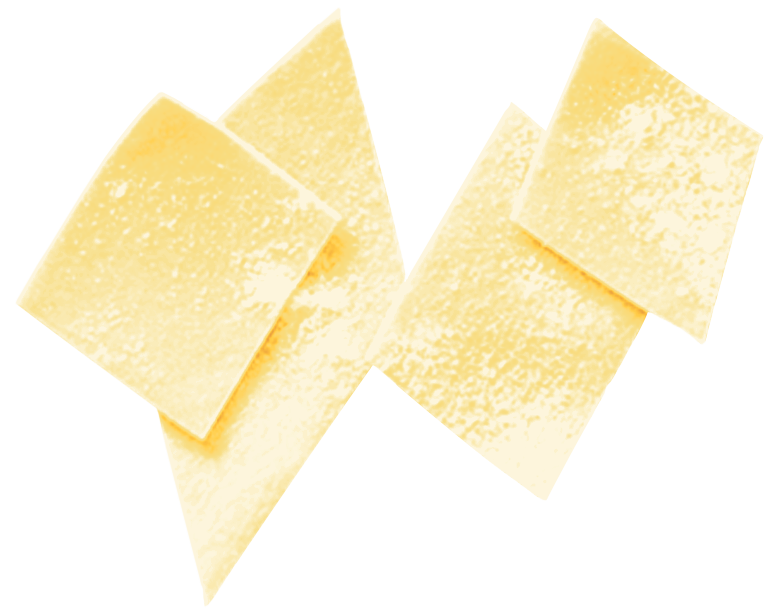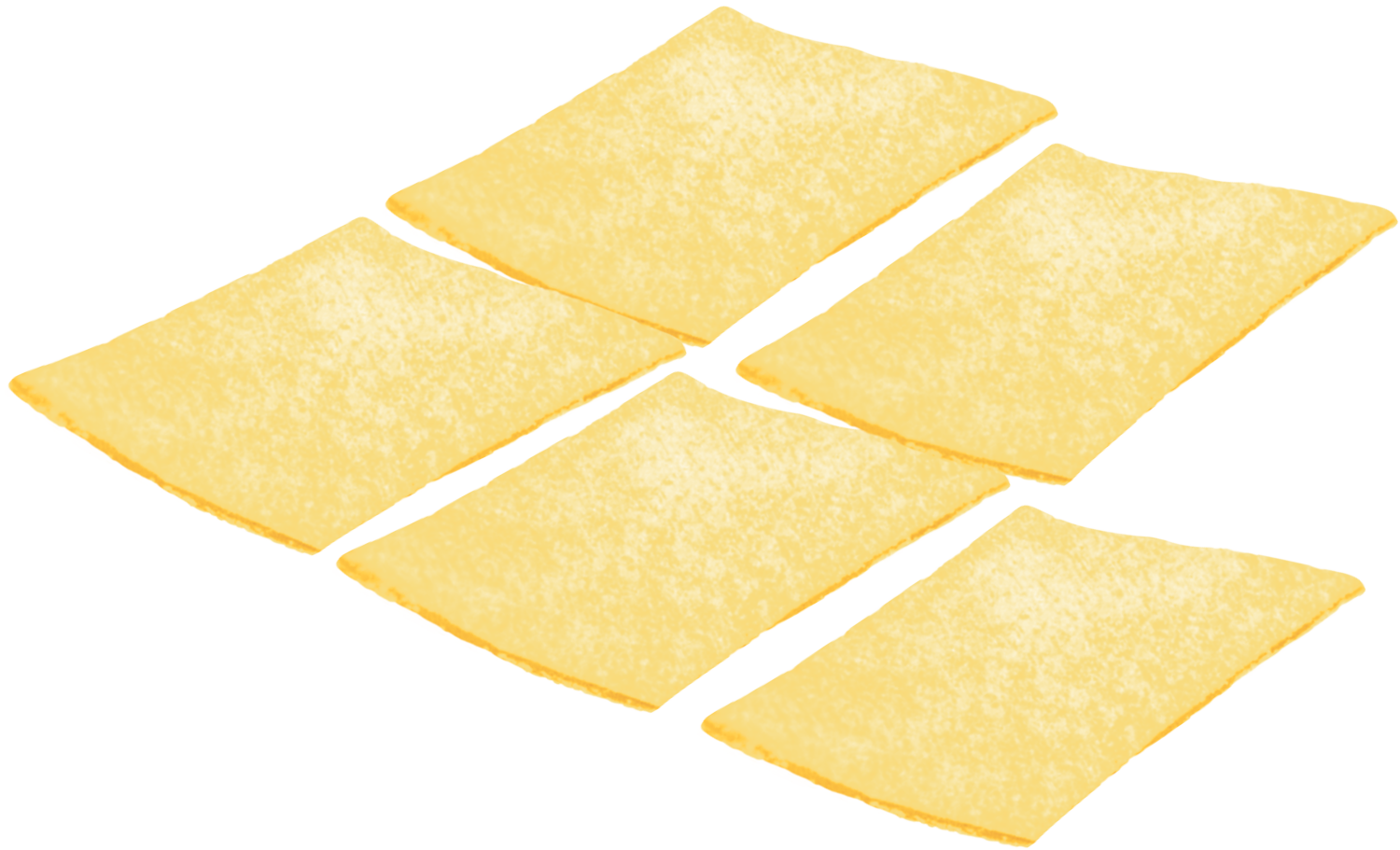WHERE FOUND
Throughout Italy, but especially in Lombardy, the Veneto, Emilia Romagna, the Marche, and Puglia.
The flour is sifted and kneaded long and vigorously with eggs or just with water. The dough is left to rest, then rolled out with a rolling pin into a sheet, not too thin, and irregular lozenge shapes of variable size are cut from it. The maltagliati of Puglia begin as a very thin pasta sheet, which is cut into long strips 1 ½ or 2 ½ inches (4 or 6 cm) wide. These strips are then cut on the short side into small, flat noodles. Both shapes are boiled in plenty of salted water or in broth.
Meaning “badly cut”, fairly random shapes. Originally they would have been made from the leftover scraps of a tagliatelle cutting session.
Maltagliati
cooking time: 7 min.
VARIOUS ANGLES
Further variations of the basic plane are produced through the use of obtuse and acute angles in the most diverse combinations. New possibilities develop out of the opportunity to shape the basic plane in such a way that it confronts the elements with the angle at the upper right, in either a reinforcing or restraining manner.

